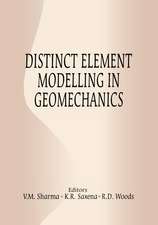Dams: Incidents and Accidents
Autor K.R. Saxena, V. M. Sharmaen Limba Engleză Hardback – 23 dec 2004
Preț: 893.58 lei
Preț vechi: 1089.73 lei
-18% Nou
Puncte Express: 1340
Preț estimativ în valută:
170.98€ • 179.48$ • 141.92£
170.98€ • 179.48$ • 141.92£
Carte tipărită la comandă
Livrare economică 10-24 aprilie
Preluare comenzi: 021 569.72.76
Specificații
ISBN-13: 9789058097019
ISBN-10: 9058097013
Pagini: 240
Ilustrații: 104 b/w images
Dimensiuni: 156 x 234 x 14 mm
Greutate: 0.52 kg
Ediția:1
Editura: CRC Press
Colecția CRC Press
ISBN-10: 9058097013
Pagini: 240
Ilustrații: 104 b/w images
Dimensiuni: 156 x 234 x 14 mm
Greutate: 0.52 kg
Ediția:1
Editura: CRC Press
Colecția CRC Press
Cuprins
ForewordPreface1. Introduction 2. Dams – incidents and failures3. Misconceptions in the design of dams4. Classic distress and failures of dams5. Investigations of distress and failures of dams6. Study of dam failure – a philosophySubject index
Descriere
Systematically monitoring the dam’s behaviour from the potential risk stage to the accident event, would allow a hazard-management programme to be implemented, minimising loss of life and property, and provide useful data.






















